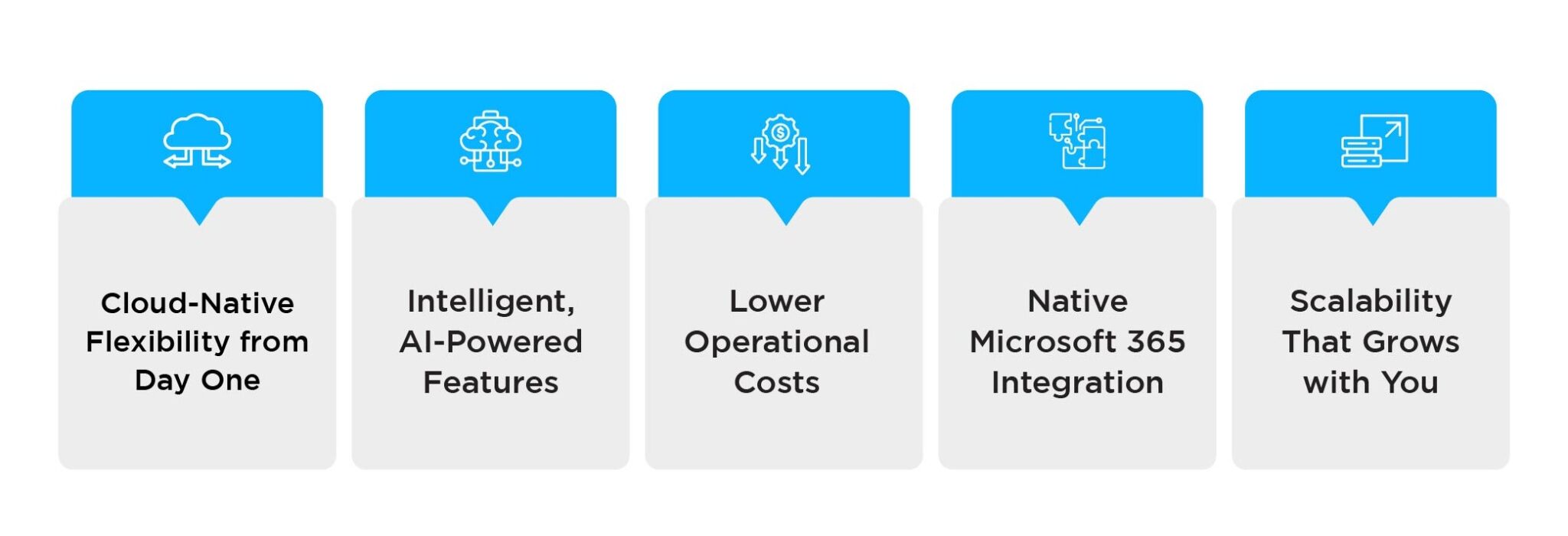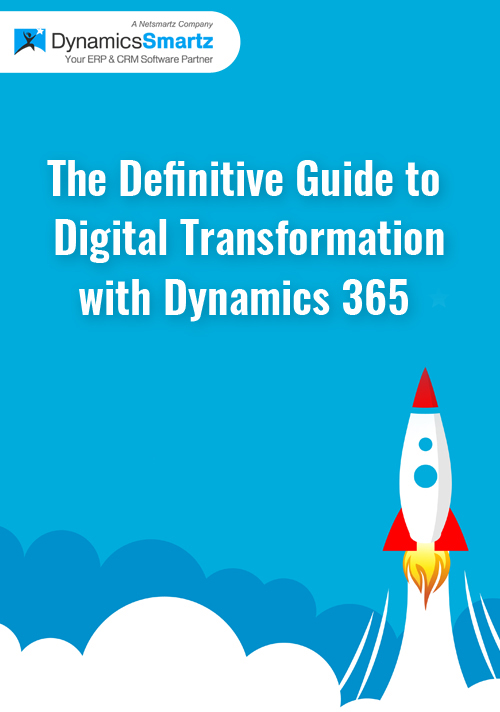Blog
Dynamics NAV to Business Central Upgrade in Australia (2025): Benefits, Challenges, & What’s Next
Written by
Nipun Thakur / ![]() August 13, 2025
August 13, 2025

64% of Australian SMBs have either already migrated or are actively planning their upgrade to Microsoft Dynamics 365 Business Central. And it’s not just for show. A Forrester Total Economic Impact™ study revealed that organizations moving to Business Central saw:
- 162% ROI over three years
- 20% reduction in legacy system costs
- 23% boost in employee productivity
That’s no small leap.
Let’s be honest: upgrading from Dynamics NAV to Business Central in Australia can feel like a mountain of change, especially for businesses juggling day-to-day operations. But the move is no longer optional if you want to stay relevant in a rapidly evolving digital landscape.
So, if you’re asking, “Is it the right time to upgrade our ERP system?”—this blog post is for you.
We’ll walk you through:
- Why businesses are investing in a Business Central upgrade in Australia
- The benefits and challenges of upgrading
- And how to move forward with the right Dynamics NAV upgrade partner in Australia
Let’s break it down.
Why Upgrade to Business Central in 2025?

1. Cloud-Native Flexibility from Day One
Business Central is a cloud-first ERP built on Microsoft Azure, giving Australian businesses the power to access data from anywhere, collaborate in real-time, and scale effortlessly. Say goodbye to on-premises servers, maintenance contracts, and manual backups.
Whether you’re managing remote teams in Brisbane or handling operations across Sydney and Perth, Business Central ensures business continuity and accessibility 24/7.
2. Intelligent, AI-Powered Features
One of the biggest Business Central upgrade benefits is access to AI tools and real-time analytics. With Microsoft Copilot built into Business Central, your teams can:
- Generate reports with natural language
- Automate repetitive tasks
- Forecast cash flow, inventory, and demand using AI models
- Visualize trends using embedded Power BI dashboards
These features weren’t possible with legacy Dynamics NAV systems.
3. Lower Operational Costs
Running Dynamics NAV on-premises means ongoing infrastructure, security, and IT costs. Upgrading to Business Central in the cloud significantly reduces your total cost of ownership.
With automatic updates, built-in security, and managed hosting on Azure, you’ll spend less on maintenance and more on innovation.
4. Native Microsoft 365 Integration
Already using Excel, Outlook, or Teams? You’ll love Business Central’s native integration across the Microsoft ecosystem. You can:
- Send quotes and invoices directly from Outlook
- Collaborate on customer records via Teams
- Update budgets in Excel in real-time
The user experience is unified and far more efficient compared to Dynamics NAV.
5. Scalability That Grows with You
From SMBs to multi-entity organizations, Business Central scales seamlessly. It supports multi-currency, multi-location, and industry-specific configurations, making it ideal for fast-growing Australian businesses.
Plus, new features are rolled out twice a year, automatically. Your ERP evolves without disruption.
Read More: Top Reasons to Upgrade from NAV to Business Central
NAV to Business Central Migration: Avoiding the Most Common Mistakes

Even with all the benefits, transitioning from Dynamics NAV to Business Central in Australia isn’t plug-and-play. Let’s break down the most common upgrade challenges.
1. Data Migration: Accuracy Is Everything
One of the biggest hurdles in the upgrade process is data migration. If your NAV instance holds years of transactional or master data, you’ll need a careful plan to clean, transform, and validate that data in the new system.
This is where working with a qualified Business Central upgrade partner in Australia becomes essential; they’ll ensure you don’t lose critical financial history or compliance data in the process.
2. Customizations & Legacy Code
Customizations built on C/AL in NAV often don’t translate directly to AL-based extensions in Business Central. You’ll need to assess which NAV customizations are still relevant and whether there’s now a native or app-based alternative.
A good Dynamics NAV to Business Central upgrade partner can help rebuild or retire custom features with minimal disruption.
3. User Adoption and Training
Even though Business Central has a modern interface, it’s still a shift from what NAV users are used to. Training is crucial to avoid resistance or errors in daily processes.
Change management should be part of your upgrade strategy, with role-based training and easy-to-follow documentation.
4. Integration Compatibility
NAV often relied on bespoke or third-party integrations, many of which aren’t directly compatible with Business Central. You’ll need to identify gaps and decide whether to:
- Rebuild the integrations
- Use Power Automate or APIs
- Replace with apps from Microsoft AppSource
Read More: Business Central vs Navision
Dynamics NAV to Business Central Upgrade: A Practical Roadmap

Here’s how to approach your Business Central upgrade in Australia—step by step.
Step 1: Audit Your NAV System
Document everything—from customizations and integrations to pain points and key reports. This will help you decide whether to do a technical upgrade or a fresh implementation in Business Central.
Step 2: Build a Smart Migration Plan
Include timelines, budget, resource allocation, training requirements, and risk mitigation. Focus on:
- Data migration scope
- Feature mapping
- Third-party apps and add-ons
- Cutover and go-live strategies
Step 3: Choose the Right Dynamics NAV Upgrade Partner in Australia
This is a critical step. Look for a Microsoft-certified Business Central upgrade partner in Australia who understands local regulations (like GST, BAS, and ATO compliance) and has experience across industries.
A partner like DynamicsSmartz can help you with:
- Data migration from NAV to Business Central
- Rebuilding custom extensions
- Compliance mapping
- End-user training and support
Step 4: Run Tests in a Sandbox Environment
Set up a test environment to validate:
- Financial reports
- User workflows
- Integration performance
- Customization compatibility
This gives you a safety net before your actual go-live.
Step 5: Go Live and Optimize
Roll out the system—either in phases or all at once—based on your business size and risk appetite. Monitor adoption, performance, and feedback closely during the first 90 days.
Step 6: Explore and Evolve
The real value of Business Central comes from ongoing usage. Make it a point to explore new features, activate AI tools, automate repetitive tasks, and periodically review your setup with your Business Central upgrade partner.
Learn more: Best Practices for Upgrading to Business Central
Final Thoughts: Is It Time to Leave Dynamics NAV Behind?
In 2025, continuing with Dynamics NAV is like using a flip phone in a smartphone world. You’ll survive, but at the cost of speed, intelligence, and efficiency.
Upgrading to Business Central brings you into the modern ERP era with:
- Real-time visibility
- AI-driven insights
- Seamless scalability
- Lower operational costs
- Native Microsoft 365 integration
The challenges are real, but with the right partner, the upgrade is smoother, faster, and far more rewarding. Let’s talk. Our team at DynamicsSmartz has helped dozens of Australian businesses like yours successfully migrate from NAV to Business Central without the headaches.
Recommended:
How Business Central Improves User Experience
Dynamics Business Central: Artificial Intelligence and Forecasting
Categories
Recent Posts
- Dynamics NAV to Business Central Upgrade in Australia (2025): Benefits, Challenges, & What’s Next
- Everything You Need to Know About Microsoft Dynamics NAV in 2025
- Microsoft Dynamics 365: The Backbone of Australia’s Finance and Supply Chain Excellence
- Simplifying Complexities: How Microsoft Dynamics 365 ERP Unifies Business Processes?
- Key Reasons Why Disaster Recovery and Business Continuity Plans are a Business Imperative








